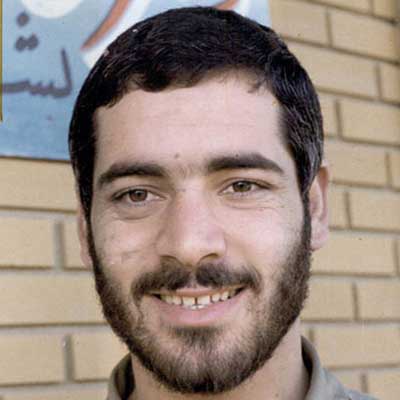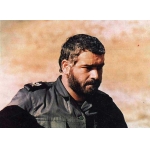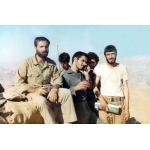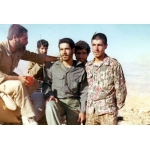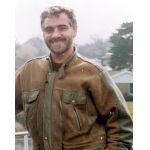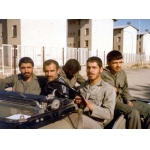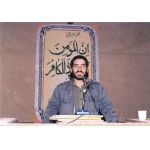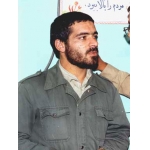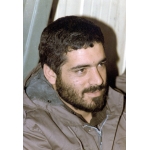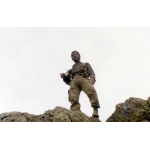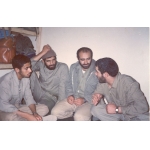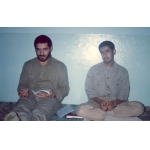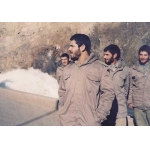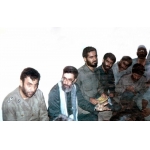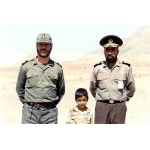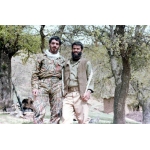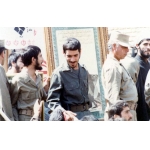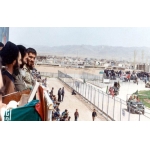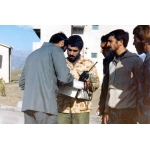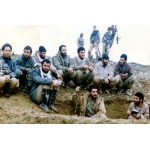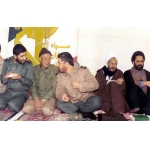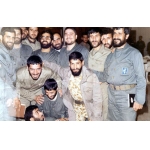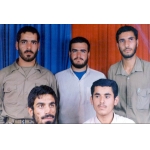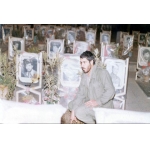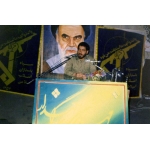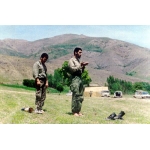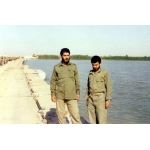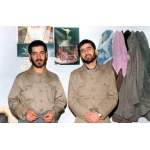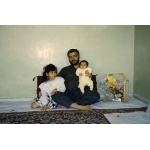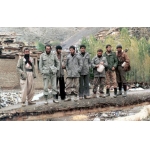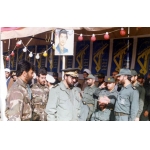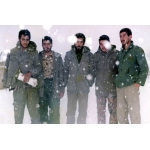Aqababaei, Akbar
Masoumeh Abedini
281 بازدید
Akbar Aqababaei (1961–1996) was the Operations Commander of the Quds Force of the Islamic Revolutionary Guard Corps (IRGC). He was born in 1961 in Isfahan where he completed his elementary and middle schooling. From a young age, Aqababaei would participate in Quranic lessons. During the school year as well as the summer, he would work in a stone-cutting factory or alongside his father in a confectionery shop. Joining the student organizations at Saremiyeh High School marked the beginning of his political activities. He was interested in sports, especially football. He was also an avid reader of religious, political, and social books. As the Islamic Revolution spread across the country, he also took part in the anti-regime demonstrations and was proactive in spreading the leaflets of Imam Khomeini. Aqababaei graduated as the Revolution was going on. When Imam Khomeini (ra) returned to Iran, he was one of the members of the welcoming committee in Tehran.
After the victory of the Islamic Revolution, Aqababaei joined the Urban Defense Committee of Isfahan on March 6, 1979. From August 7 to August 23, 1979, he underwent military training. Subsequently, he joined the Isfahan branch of the IRGC and completed a three-month military instructor course at the Imam Ali (as) Barracks in Tehran. On July 30, 1980, Aqababaei started his service as a tactics instructor at the 15th Khordad Barracks in Isfahan.
On November 23, 1980, during the Kurdistan crisis, he was deployed to Sanandaj. Also, on March 7, 1981, he was appointed as the commander of operations planning in the Sanandaj IRGC. Aqababaei and his fellow fighters managed to defeat the anti-revolutionary saboteurs in Sanandaj, Kamyaran, Sarchin, Gilaneh, and Negel. On July 27, 1981, he was injured and after a partial recovery, on September 1, 1981, returned to Kurdistan.
In Sanandaj, Aqababaei organized football tournaments for the youth, viewing it as an investment in the future generation.
On February 21, 1983, while serving as the operations planning officer of the Kurdistan IRGC, he designed and executed extensive operations and participated in Operations Valfajr 2 and 4. Later on, he became the operations officer of the Northwest Kurdistan region conducting 35 clearing operations in the cities of Boukan, Kamyaran, and Sanandaj.
On June 22, 1986, Aqababaei assumed the role of deputy for planning and operations at the Hamzeh Seyyed Al-Shohada Headquarters, playing an instrumental role in Operations Karbala 1 (Mehran operational area), Karbala 2 (Haj Imran), Fath 1 (Kirkuk, Iraq), Karbala 4 (west of Arvand), and Karbala 5 (Shalamcheh and east of Basra).
Aqababaei got married on November 30, 1986, and Imam Khomeini (ra) recited his marriage sermon.
On May 15, 1987, he was appointed as the commander of the 18th Al-Ghadir Brigade. He played crucial roles in leading the forces during Operations Karbala 10, Nasr 5, Bayt-al-Moqaddas 2 and 3, Valfajr 10, Bayt-al-Moqaddas 4, and Bayt-al-Moqaddas 7, which were conducted to thwart Iraq’s attacks on Shalamcheh (June 13, 1988 and July 22, 1988). Not to mention how on June 13, 1988, he, despite his injuries, managed to rescue two Iranian battalions who were under siege by Iraqi soldiers.
From 1981 to 1988, Aqababaei participated in over sixty major and minor operations conducted in the South, West, and Northwest of the country. Moreover, he was involved in operations [HR1] planning at the Hamzeh, Karbala, Ramadan, and Najaf Headquarters. He was injured multiple times, including being subjected to a chemical wound on March 23, 1988, in the Shakh Shemiran region.
Following the acceptance of UN Resolution 598 by the Iranian government, he was appointed as the commander of the Yazd IRGC in addition to his role as commander of the 18th Al-Ghadir Brigade. In 1988, Aqababaei passed the University Entrance Exam and was admitted to Amirkabir University of Technology to study industrial engineering. However, his critical responsibilities prevented him from pursuing higher education.
On March 14, 1989, he completed the AJA University of Command and Staff Course (DAFOOS). On August 23, 1990, he was appointed as the deputy commander of the 14th Imam Hossein (as) Division. On October 13, 1993, Aqababaei became the Operations Commander of the Quds Force of the IRGC and was deployed multiple times abroad, including to Bosnia and Herzegovina and Lebanon.
On August 24, 1996, he received his B.A. in judicial law and was simultaneously honored with the rank of Brigadier General by the Supreme Leader.
After years of coping with the 70% disability due to the Iraqi chemical attacks, Akbar Aqababaei was martyred on August 25, 1996, at Baqiyatallah Hospital in Tehran. After the funeral processions that were held in Tehran and Isfahan, his body was buried in the Golzar Shohada cemetery in Isfahan.[1]
In his will, he wrote: "My dear ones, know that the enemies of Islam, by using wealth and power, seek to make you despair of your glorious heritage deriving you to follow this deceitful world and separating you from the path of righteousness".
Martyr Akbar Aqababaei had two daughters, Zeynab and Zahra.
[1] Reference: A Summary of an article published in the Sacred Defense Encyclopedia, Vol. 1, Tehran, The Center of Encyclopedia of the Sacred Defense Research Institute, 2011, Pp. 182-184.


